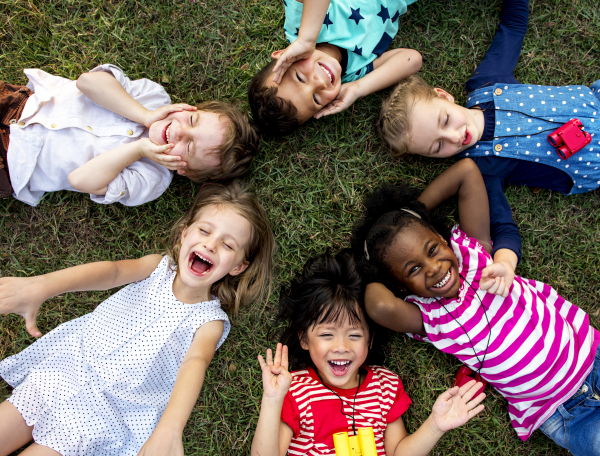The Heart Gallery of Texas
The Heart Gallery of North Texas, presented by The Gladney Center for Adoption, stands as a platform of hope for children in foster care who are seeking their forever families. Through photolistings and heartfelt stories, the gallery showcases waiting children, offering them a chance to capture the hearts of hopeful adoptive families. But why do photolisting platforms like The Heart Gallery of North Texas exist for foster children?
1. Exposure to Adoptive Families
Children in foster care who are eligible for adoption are often vulnerable, having experienced trauma, loss, and instability in their young lives. The Heart Gallery provides these children with a platform to shine, to be seen as individuals deserving of love, belonging, and permanency. Through professional photography and heartfelt narratives, each child’s unique personality and potential are showcased, increasing their chances of finding a loving forever family.
2. Stability through Permanency
While the foster care system strives to provide children with the best possible living situation while they wait for reunification efforts, a permanent home with a forever family—whether biological or adoptive—is often the ideal outcome. The Heart Gallery serves as a bridge between waiting children and prospective adoptive families by facilitating connections and creating pathways to permanency.
3. Community Support
In addition to connecting children with loving families, The Heart Gallery also allows them to receive support from their community. Through volunteered efforts on their behalf, whether it’s fundraising, advocacy, or spreading awareness, communities can come together to rally around these children, showing them that they are not alone and that they are valued members of society.
4. Connecting Families
Furthermore, The Heart Gallery opens the door to adoption for hopeful adoptive parents and children alike. By providing a platform where families can explore and learn about waiting children, it empowers prospective parents to take the first step toward adoption. Through The Heart Gallery, families are inspired to open their hearts and homes to children in need, transforming lives and creating forever families.
5. Gateway to Adoption
The Heart Gallery of North Texas, presented by The Gladney Center for Adoption, serves as a vital resource in the journey of foster adoption. By giving children better exposure to adoptive families, connecting them with loving homes, and providing support from their community, The Heart Gallery paves the way for permanency and stability in the lives of foster children. Moreover, it serves as a beacon of hope for hopeful adoptive parents, offering them the opportunity to fulfill their dreams of parenthood while making a profound difference in the lives of children in need. As we celebrate the transformative power of adoption, let us continue to support and champion the mission of The Heart Gallery, ensuring that every child finds their place in a loving forever family.
The Gladney Center for Adoption
The Gladney Center for Adoption, founded in 1887, is a premier adoption agency dedicated to creating bright futures through adoption. With a legacy of compassion and excellence spanning over a century, Gladney has helped thousands of birth parents, adoptive families, and children find hope, healing, and love. Through comprehensive adoption services, including domestic, international, and foster-to-adopt programs, Gladney remains committed to its mission of providing loving homes for every child. As a leader in the field of adoption, Gladney continues to innovate and advocate for ethical adoption practices, ensuring that every child’s best interests are prioritized.
Foster Care and Adoption FAQs
- What is foster care?
- Foster care is a temporary living arrangement for children who cannot live with their biological families due to safety concerns or other reasons. Ideally, foster families provide a stable and nurturing environment for these children while they await reunification with their birth families or placement in a permanent home through adoption.
- What is adoption?
- Adoption is the legal process through which individuals or couples become the permanent legal parents of a child who is not biologically their own. Adoption provides a forever family for children who cannot be raised by their birth parents.
- What is the difference between foster care and adoption?
- Foster care is intended to be a temporary arrangement for children until they can safely return to their birth families or find a permanent home through adoption. Adoption, on the other hand, is a permanent legal arrangement that establishes a lifelong relationship between a child and their adoptive parents.
- Who can become a foster parent?
- Requirements for becoming a foster parent vary by state and agency, but generally, individuals or couples must meet certain criteria such as being of legal age, completing background checks, participating in training, and demonstrating financial stability and emotional readiness to care for a child.
- How long does it take to adopt a child?
- The timeline for adoption can vary widely depending on factors such as the type of adoption (domestic, international, foster care), the age and needs of the child, and the adoptive family’s preferences. On average, the adoption process can take anywhere from several months to several years.
- What are the costs associated with adoption?
- The cost of adoption varies depending on the type of adoption and the agency or facilitator involved. Some adoptions, such as foster care adoptions, may have minimal or no cost to the adoptive family, while other types of adoption, such as international or private domestic adoptions, can be more expensive.
- What are the different types of adoption?
- The main types of adoption include domestic adoption (either through foster care or private agencies), international adoption, and kinship adoption (when a relative adopts a child). Each type of adoption has its own requirements, processes, and considerations.
- Can I adopt if I already have biological children?
- Yes, many families with biological children choose to adopt. Having biological children does not disqualify individuals or couples from adopting, but agencies may consider factors such as the age and needs of the existing children and the family’s ability to provide for the needs of an adopted child.
- What is open adoption?
- Open adoption is a type of adoption in which the birth parents and adoptive parents have some form of ongoing contact and communication, often including sharing identifying information and/or maintaining relationships with each other and the adopted child. The level of openness in an adoption can vary based on the preferences and agreements of all parties involved.
- What support services are available for adoptive and foster families?
- Adoption and foster care agencies typically offer a range of support services for families, including pre-adoption education and training, post-adoption counseling and support groups, access to resources and referrals, and assistance navigating the complexities of the adoption or foster care process. Additionally, there are many community-based organizations and online resources available to provide support and information to adoptive and foster families.
Learn More About Wednesday’s Child
The impact of Wednesday’s Child Adoption extends far beyond the confines of television screens. By featuring children from diverse backgrounds and circumstances, the program dispels myths and misconceptions surrounding adoption from foster care. It showcases the resilience and potential of each child, emphasizing the importance of providing stable and nurturing environments for their growth and development. Through the collaborative efforts of WFAA and local adoption agencies, Wednesday’s Child Adoption now in association with the Heart Gallery has facilitated countless successful matches between waiting children and loving families, transforming lives in the process.
Texas Adoption
For those looking to expand their families, the process of adopting a child in Texas offers numerous possibilities. There are many kids up for adoption in Texas who need loving homes, and the state provides extensive resources to support this journey. If you aim to adopt in Texas, whether through foster care, private agencies, or other means, the procedures ensure a suitable match for both the child and the adoptive parents. Various organizations dedicated to helping families adopt Texas children offer guidance through the legal and emotional intricacies involved. Choosing to adopt a child in Texas makes a significant impact, giving a child the stability and love they need while enriching your own life. Adopting a child in Texas is an incredibly rewarding experience, opening up new opportunities for both the child and the family.
The Gladney Center for Adoption stands out among adoption agencies in Dallas Fort Worth, offering comprehensive services for those seeking adoption in Texas. With numerous Texas kids for adoption, Gladney provides extensive support to families throughout the adoption journey. If you’re searching for kids for adoption in Texas or want to understand more about Texas adoption, Gladney’s expertise ensures a smooth and informed process. They also focus on placing Texas waiting children into loving homes, making every effort to find the best matches.

